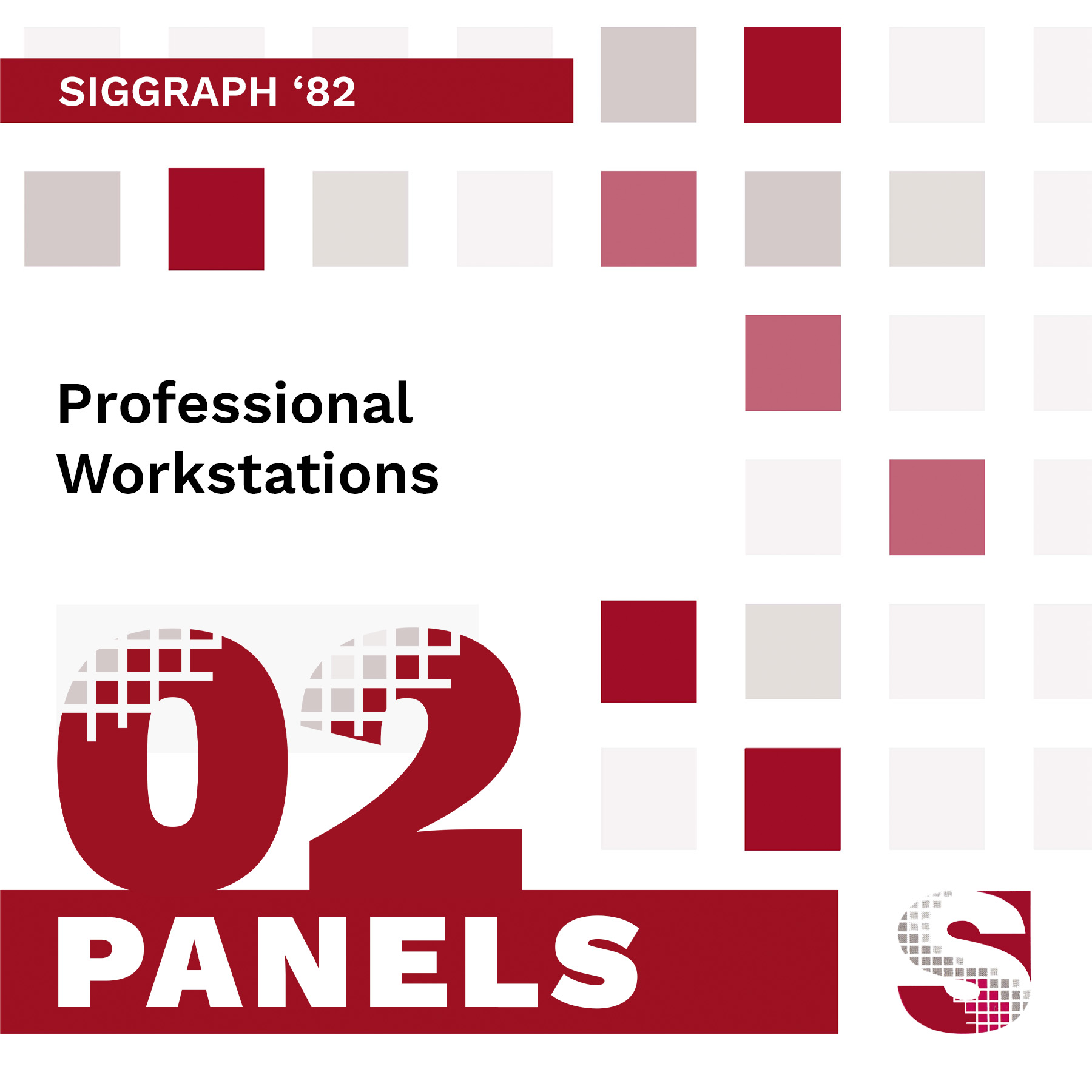“Professional Workstations” Moderated by
Conference:
Type(s):
Entry Number: 02
Title:
- Professional Workstations
Presenter(s)/Author(s):
Abstract:
Andries van Dam The panel will examine the evolution of the professional workstation from a time shared terminal to powerful graphics-based personal computer connected to a resource-sharing local network. The panelists will speculate on the future evolution of both the hardware/software architecture and end user environment. Workstation development at Stanford James H. Clark Workstation development at Stanford is closely linked with graphics, distributed systems and networking. Two distinct systems have evolved over the last 3 years: the SUN system and the IRIS system. The SUN is a low-cost system based upon an efficient MC68000 processor/memory design and a relatively low-performance, high-resolution bit-map display. The IRIS (Integrated Raster Imaging System) is based upon the same MC68000 design, but the graphics part of the system is a modest- to low-cost, high-performance, high-resolution, color or black and white system that uses the Geometry Engine and several other custom IC parts. Both SUN and IRIS interface to the Stanford Ethernet network, and both are being used for distributed systems research, VLSI design stations, and graphics research. In addition, IRIS will probably be used for mechanical CAD research by the mechanical engineering department and in situations where high-performance graphics is important. Improvement Goals for Workstation Facilities Robert M. Dunn Three major areas of improvement are needed: interaction techniques that are simpler, provide faster reaction, are useful for higher-level inputs, and have user-style-oriented alternatives. The second area is for image rendering based on local capabilities, in varying degrees of image quality as a function of desired “grade of service”. The third area is to provide support to incremental model construction and approximate design evaluation. There must be evaluation techniques that can work on partial models and give one approximate results. Implications of these criteria for workstation architecture will be discussed. The application of network workstations to large-scale engineering Harvey Kriloff The development of computerized analysis procedures during the last twenty years has been largely oriented toward providing increased analytic function. This has meant that considerations of user access to specific capabilities or ease of use of these mammoth programs are only now becoming user concerns. The emerging new technologies for display, input and their interaction, when applied to the professional workstation, will be playing an increasingly important role in satisfying these concerns. A professional workstation can be used both to improve the efficiency by which data is collected for an existing analysis program and to assist the user in the preparation of data for a formal presentation or report. This performance improvement can be accomplished through the development of user-adapted “macro procedures” for data entry, the execution of processes to check program input data for accuracy and consistency, and workstation assistance in the training of both new and existing users. At the output stage of analysis, the workstation can be used to select and reformat information prepared by the analysis program, explore the interrelationship of results from several different analyses, and derive the data for a succeeding analysis in an iterative design mode. At Boeing Computer Services, we have been exploring the benefits realized by the development of such a workstation when applied to the field of structural engineering. An interaction-rich workstation with a human-engineered executive that controls and integrates the user interface, connected to our national network of IBM, CDC and CRAY computers with a broad variety of engineering software, supplies the engineer with a full range of tools for analysis, data preparation, report writing and data relationship exploration that are only beginning to be appreciated. In the next few years it is expected that this workstation (distributed) methodology for doing engineering and other quantitative professional functions will radically change the way these analytical processes are performed. Personal Workstations in a Local Network David Nelson For many applications, personal workstations provide a superior form of computing compared to timesharing. The requirements of workstations, however, go well beyond the facilities provided by the local computer; they must include the equivalent advantages of timesharing such as user-to-user communications, shared programs and data files, shared peripherals, etc. The preferred way to implement these functions is to interconnect all workstations by means of a high-speed local network, controlled by a distributed operating system which provides transparent access to all network resources through a network-wide virtual memory system. Additional workstation functions such as large virtual address space and a concurrent multiple-window display system significantly increase user productivity. A high resolution bit-map display system with hardware support for dynamics is an essential component. For the future we look towards both significant cost reductions and improvement in performance, as well as significantly higher level software to better implement the user-computer interface.




